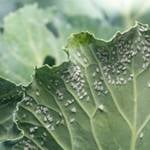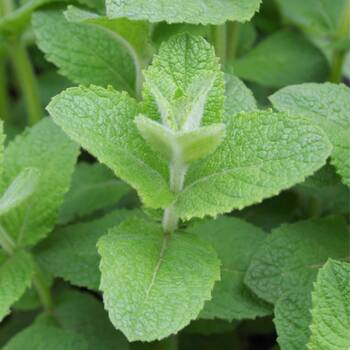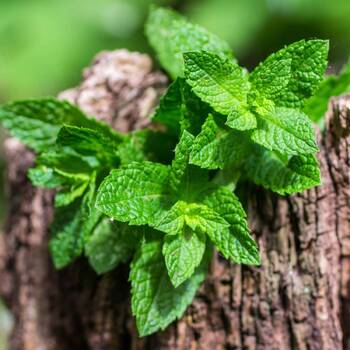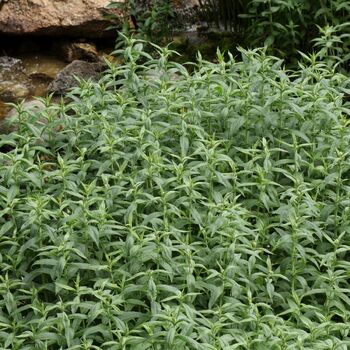
How to Grow Mint Seeds
Grow Guide #2289
Family: Lamiaceae
Binomial name: Mentha sp.
Life Cycle: Perennial
This 'How to Grow' guide details everything a home gardener needs to know to plant, grow and care for Mint (Mentha sp.).
True mints belong to the genus Mentha and include garden mint, peppermint, apple mint and spearmint. Some other plants, such as catmint (Nepeta sp.), Korean Mint (Agastache rugosa) and Mountain Mint (Micromeria thymifolia) are known as 'mint' but are different species botanically, with different growing requirements. This guide applies to Mentha species.
When to Sow Mint Seeds
Mint can be grown year-round in most climates. Avoid planting in extremely hot or cold weather which can affect germination and growth. Use the table below to identify the best time of year to sow mint in your climate.
| JAN | FEB | MAR | APR | MAY | JUN | JUL | AUG | SEP | OCT | NOV | DEC | |
|---|---|---|---|---|---|---|---|---|---|---|---|---|
| Cool | ||||||||||||
| Temperate | ||||||||||||
| Sub-Tropical | ||||||||||||
| Tropical | ||||||||||||
| Arid |
Preparation
Mint plants can be difficult to eradicate once they are established in the garden. Choose a permanent position in a garden bed or grow them in containers to prevent them spreading into unwanted areas.
Mint plants are best grown in full sun or part shade. Choose a location that will receive at least 3 hours of full sun each day.
Mint plants need a well drained soil enriched with plenty of organic matter. Prepare soil by weeding it thoroughly, digging it over to loosen it and adding aged animal manure or compost. Keep the area free of weeds until planting. Learn more about preparing soil for planting here.
Mint plants can be grown in containers. If possible choose a variety that’s recommended for container growing. Use a good quality potting mix and make sure your container is large enough for mature plants; a minimum of 10 litres is recommended for mint. During the growing season, keep in mind that container grown plants may need additional fertiliser to encourage healthy growth.
How to Sow Mint Seeds
Mint seeds do not require any treatment (eg soaking, stratification) before sowing.
Mint seeds grow best when they are raised in trays or other containers and transplanted to the garden once established.
- Fill trays, punnets or jiffy pots with a good quality seed-raising mix, or use soil starter pellets.
- Sow seeds 1mm deep.
- Keep soil moist but never wet or dry.
- Seeds should germinate in around 10-14 days at a soil temperature of 13-18°C.
- Transplant seedlings to the garden once they have their first true leaves and are large enough to handle (usually 5-10cm tall).
- Plant out, spacing plants 30cm apart.
Tip: Mint seeds are quite small. Handle them carefully to avoid them blowing away or being washed away. Mix seeds with sand or fine potting mix prior to sowing or use a seed dispenser, damp toothpick or tweezers to help space them evenly. Press lightly into the surface after sowing so that the seeds make good contact with the soil. Take extra care to make sure seeds and seedlings don’t dry out. Read more about sowing small seeds here.
Tip: Seeds of this variety can be slow to germinate. Take note of the expected germination time, be patient and follow the recommended depth and temperature guidelines closely for the best chance of success.
How to Grow Mint
Mint plants need regular watering during the growing season. Do not let soil dry out; keep soil evenly moist but not waterlogged. Water deeply in the early morning or late afternoon. Avoid watering the leaves of plants to avoid fungal diseases. Learn more about watering here.
If soil was well prepared no extra fertiliser should be necessary. In poor soil or to give your plants an extra boost, application of a high-nitrogen fertiliser or one formulated for leafy greens or herbs can be beneficial:
- Apply slow release fertiliser at the recommended rate when transplanting or when seedlings are 5-10cm tall.
- Apply liquid fertiliser at the recommended rate and frequency during the growing season.
How to Harvest Mint
Mint should be ready to harvest in approximately 80-100 days.
Mint leaves have the strongest flavour just before the plant flowers, when the levels of essential oils in the leaves are the highest. Mint is ready to harvest when the stems have grown long enough to pick, and can be harvested as needed. Harvest by pinching off the outer stems and leaves, leaving some on the plant for future growth. Mint can be stored short term in a perforated plastic bag in the fridge, or the stems can be placed in a glass or jar of water to keep them hydrated. For longer term storage, mint can be dried or frozen in ice cubes.
Common Problems when Growing Mint
Like all plants, mint is susceptible to some pests, diseases and other problems. Below is a list of the most common problems gardeners encounter when growing mint plants:
 Aphids are small (2-4mm long) sap-sucking insects that congregate on the new shoots or the undersides of leaves. They can cause leaves to wilt or become discoloured, and also excrete honeydew which can attract ants and other insect pests. To manage aphids, remove them by spraying with a garden hose, apply a soap or alcohol spray, or encourage predatory insects to your garden. Read more about aphids here.
Aphids are small (2-4mm long) sap-sucking insects that congregate on the new shoots or the undersides of leaves. They can cause leaves to wilt or become discoloured, and also excrete honeydew which can attract ants and other insect pests. To manage aphids, remove them by spraying with a garden hose, apply a soap or alcohol spray, or encourage predatory insects to your garden. Read more about aphids here. Rust (Puccinia sp.) is a fungal disease that causes brown to orange raised spots or patches to appear on foliage. Fungal spores are spread by wind or water to neighbouring plants, especially in temperatures of 10-20C and when humidity is high. To manage rust, space plants to avoid overcrowding, grow them in the recommended amount of light (eg full sun), do not over fertilise crops, remove dead plants and practice crop rotation. Read more about rust fungus here.
Rust (Puccinia sp.) is a fungal disease that causes brown to orange raised spots or patches to appear on foliage. Fungal spores are spread by wind or water to neighbouring plants, especially in temperatures of 10-20C and when humidity is high. To manage rust, space plants to avoid overcrowding, grow them in the recommended amount of light (eg full sun), do not over fertilise crops, remove dead plants and practice crop rotation. Read more about rust fungus here. Slugs and snails are molluscs that feed on tender leaves and shoots, mostly at night, leaving slimy trails behind them. Control them by removing their hiding places, keeping free range poultry, collecting them by torchlight or by placing traps. Read more about slugs and snails here.
Slugs and snails are molluscs that feed on tender leaves and shoots, mostly at night, leaving slimy trails behind them. Control them by removing their hiding places, keeping free range poultry, collecting them by torchlight or by placing traps. Read more about slugs and snails here. Whitefly is a sap-sucking insect related to aphids. They are often found in large numbers on the underside of leaves and will swarm in clouds when disturbed. Plants may have yellowing leaves or may wilt, and growth will be slowed. Whitefly can be removed with a garden hose or sprayed with soap spray. Badly affected plants should be destroyed. Attracting beneficial insects that will prey on whitefly can be beneficial. Read more about managing whitefly here.
Whitefly is a sap-sucking insect related to aphids. They are often found in large numbers on the underside of leaves and will swarm in clouds when disturbed. Plants may have yellowing leaves or may wilt, and growth will be slowed. Whitefly can be removed with a garden hose or sprayed with soap spray. Badly affected plants should be destroyed. Attracting beneficial insects that will prey on whitefly can be beneficial. Read more about managing whitefly here.


.png)






